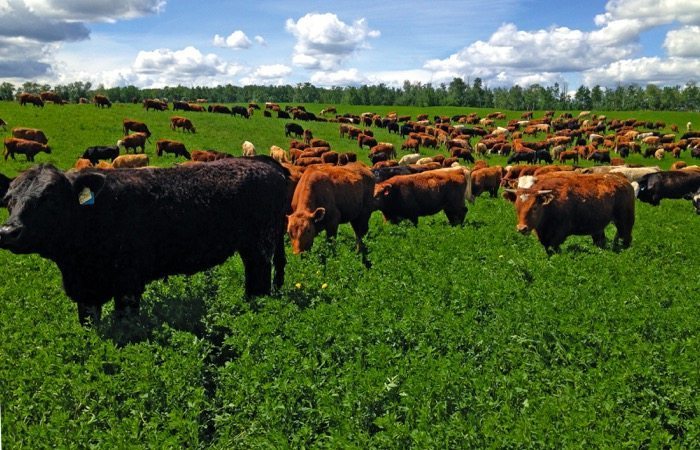
Ruminating on methane

The compartmentalised digestion systems of ruminant farm animals – mainly cows, buffalo, pigs, sheep and goats – emit about 2.5 billion tonnes of carbon dioxide-equivalent greenhouses gases per year through enteric fermentation – belches and flatulence – 76% from cattle, 14% from buffalo and 10% from small ruminants.1
If cows were a country, their emissions would exceed those of the EU, according to former US Sec of Energy, Nobel laureate Steven Chu.
The largest source of direct greenhouse gas emissions from ruminants – 44% — is CH4 (methane), with 90% from enteric fermentation and 10% from manure. Another 29% comes from nitrous oxide, followed by 27% from carbon dioxide.1
Methane and nitrous oxide are exponentially more harmful than carbon dioxide. Emissions of these gases are measured in terms of carbon dioxide equivalent. Where CO2 is 1, methane is calculated as between 25 and 86 (times as harmful), depending on the time period measured. The time period changes the exponent because methane disappears from atmosphere more rapidly than carbon dioxide).2 Nitrous oxide is a still more powerful greenhouse gas, 296 times as harmful as carbon dioxide.3
REFERENCES
- 1.Opio, C., Gerber, P., Mottet, A., Falcucci, A., Tempio, G., MacLeod, M., Vellinga, T., Henderson, B. & Steinfeld, H. Greenhouse Gas Emissions from Ruminant Supply Chains: A Global Life Cycle Assessment. Food and Agriculture Organization of the United Nations. Rome; 2013:xvi-xvii. http://www.fao.org/3/i3461e/i3461e.pdf
- 2.Shindell DT, Faluvegi G, Koch DM, Schmidt GA, Unger N, Bauer SE. Improved Attribution of Climate Forcing to Emissions. Science. Published online October 29, 2009:716-718. doi:10.1126/science.1174760
- 3.Watson, R.T. and the Core Writing Team (Eds). IPCC Third Assessment Report: Climate Change 2001. Cambridge University Press; 2001:398.